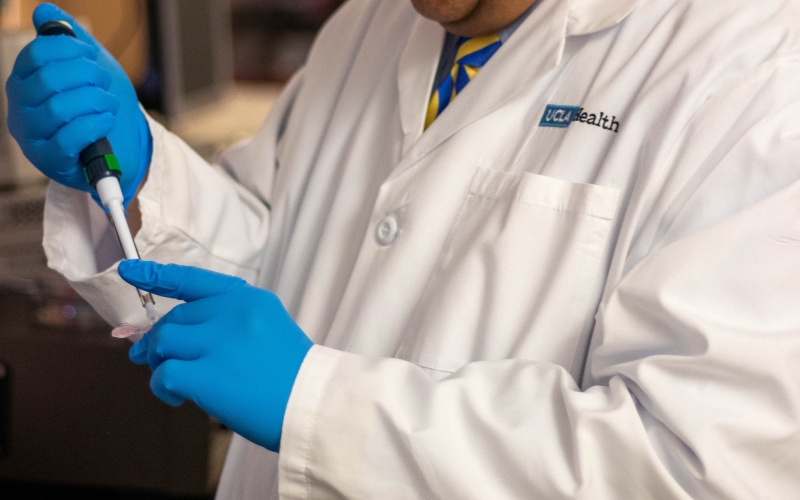
By: Trish Adkins
The global burden of childhood cancer is staggering.
Every year, an estimated 300,000+ new cases of cancer affect children under the age of 20 worldwide. However, this number is most likely underreported due to childhood cancer cases that go undiagnosed and a lack of comprehensive childhood cancer registries.
After diagnosis, children everywhere face an uncertain future. In high-income countries, approximately 80-percent of children diagnosed with cancer will survive more than 5 years. In some low and middle-income countries, only 20-percent of children will survive.
The solution to this global health crisis is research.
Alex’s Lemonade Stand Foundation (ALSF) has funded more than 1,000 research grants at 135 institutions. Projects funded through the ALSF Grant Program cover every step of the scientific process from early stage innovative research all the way through to lifesaving clinical trials for kids with cancer.
World Cancer Research Day, held on September 24, shines a light on the importance of cancer research. Here are three innovative childhood cancer research projects you need to know about for today and every day:
1. The International Roadmap to Cures
The Crazy 8 Initiative was launched by ALSF in 2018 with the purpose of creating and implementing roadmaps for cures for eight specific, hard-to-treat childhood cancers and pressing topics related to accelerating cures. More than 90 top scientists and researchers from around the world make up the Crazy 8 Initiative, including Dr. Stephanie Hicks from the Johns Hopkins Bloomberg School of Public Health.
Dr. Hicks is part of the Big Data Crazy 8 project team that is working to create the tools required to analyze childhood cancer data at the single cell level.
Why is this critical? The field of childhood cancer research has long produced data that blends what is happening in several cells in a tumor together. However, this does not allow researchers to study each individual cell in cancer or in the healthy cells of a patient with cancer. In addition, different data methodologies are not always compatible across projects. 
Dr. Hicks is currently working closely with Dr. Mariella Filbin, another Crazy 8 grantee to study the communication between cancer cells and healthy cells in high-grade gliomas, like DIPG. Using this specific research, Dr. Hicks is creating a reproducible workflow that will allow other scientists to compare and contrast data and analyses across studies—improving efficiencies and hopefully the rate of discovery.
2. Safer Treatments and Less Side Effects for Osteosarcoma
For children who are diagnosed with bone cancers like osteosarcoma, surgical removal of tumors can improve the odds of a cure, but also cause damage to healthy bones, especially those resulting in volumetric bone losses.
In an effort to rebuild and repair the effected bone, surgeons typically use bone grafting (the transplant of healthy bone tissue from patient’s own skeleton, autografts, or those obtained from donor or animal cadaver, allografts) in combination with high-doses of bone morphogenetic protein (BMP) therapeutics, which are drugs that support bone development.
However, this conventional approach does not always result in fully repaired bones, and there are some safety risks associated with the use of BMP therapeutics.
The result: children are left with bones that are not strong enough to support their active lifestyle.
However, Jie Song, PhD an ALSF grantee and professor of orthopedics & physical rehabilitation at the University of Massachusetts is getting closer to a solution that allows doctors to remove tumor and preserve quality of life. Dr. Song developed a 3-D printed biodegradable synthetic bone graft that is capable of successfully attaching to healthy bone and supporting robust bone formation without the use of high-does of BMP therapeutics.
Using her ALSF Innovation grant, Dr. Song found that her synthetic bone graft successfully resulted in the formation of healthy long bones 12-16 weeks after surgery. This successful outcome now has the potential to translate into safer and more effective reconstruction of bones in children with osteosarcoma, spinal cord cancer, oral cancer or other tumors in the skeleton.
3. Accelerating Drug Development for Children
ALSF funded researcher, George Daley MD/PhD from the Harvard School of Medicine has taken a huge leap forward in the development of drugs to treat childhood cancer.
The promise of precision medicine as a potential cure for all types of childhood cancer brings with it the need for targeted therapeutics; but finding those highly specialized drugs requires hours of lab work, drug development, clinical trials and the hope that ultimately the treatment will translate into a cure for children.
Using his Innovation grant, Dr. Daley was able to demonstrate that the drug-like molecules developed by his team disrupted a protein called LIN28 in the lab. LIN28 is linked to a wide variety of pediatric cancers including neuroblastoma, Wilms tumor, germ cell tumor, leukemia and pediatric brain tumors. Disrupting the protein has the potential to also disrupt cancer growth and progression.
This finding pushed Dr. Daley’s research from the investigative phase to the drug development phase and led to the formation of a biotechnology company that is dedicated to creating the drugs that will disrupt LIN28, meaning new therapies could get to kids sooner than before.
World Cancer Research Day is held every September 24 with an aim of increasing the world’s awareness of the need and importance of cancer research. ALSF funds childhood cancer research that is happening in labs all across the world with one goal in mind: cures. Learn more about the ALSF Innovative Grants Program here.

